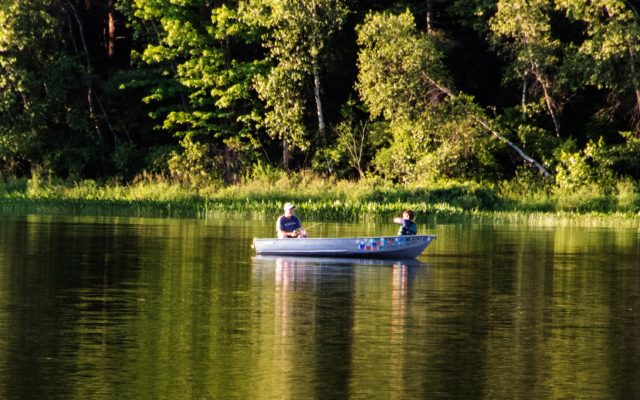
‘No live fish as bait’ is now the default rule in northern Maine, but not much will really change
Last week the Maine Department of Inland Fisheries and Wildlife’s advisory council approved a rule that sounds ominous, but will actually change very little for the state’s anglers. Simply stated, in the state’s north zone, the general fishing law will ban the use of live fish as bait.
Unless, that is, a special rule is attached to a particular water, making live bait legal.
Before you start peppering the DIF&W with mean emails, realize this: The move is largely symbolic, and designed to stress the importance of the region’s native and wild brook trout population, and to stress the potential damage to those fisheries that can occur if bait fish are introduced where they don’t belong.
On the vast majority of northern waters, the rules will stay exactly the way they were. Those who fished legally with live bait in the past did so on a lake that will now likely have an S-11 code attached, designating that water as a place where live bait is allowed.
The state isn’t out to take your smelts and shiners away from you. Not even close.
Francis Brautigam, the DIF&W’s director of fisheries and hatcheries, said that live bait will continue to be allowed on 339 different lakes, ponds, streams and rivers in the north zone, which includes Franklin, Somerset, Piscataquis, Aroostook and northern Oxford and Penobscot counties. The restriction on live bait will continue on lakes and ponds that hold native or wild brook trout, and will extend to some tributaries of those waters. Maine has thousands of lakes and ponds, and Brautigam was not able to provide a number of how many north zone waters will not allow live fish to be used as bait.
But that doesn’t mean that changing course isn’t a big deal.
“The new rule in the critically important north zone that prohibits the use of live fish as bait by rule, not exception, is a huge step forward in regard to protecting and preserving Maine’s wild native fish,” said Bob Mallard, a fisheries conservationist who serves as the national vice chair of the Native Fish Coalition. “It is the single most important wild native fish initiative since the State Heritage Fish law was passed in 2005.”
The logical step for anglers: Assume that every lake or pond you visit doesn’t allow live bait to be used. Then check the state’s rulebook for possible exceptions.
In December, Brautigam explained the rationale that had led to the then-proposed “no live fish as bait” rule.
“We’re really trying to set the stage and get people to rethink how they think about fishing and the resources that they have in the northern part of our state,” Brautigam said. “They are [brook trout] resources that make our state truly unique when you look around the country.”
With that said, the fisheries director also pointed out that the intent of the new rule wasn’t to erase years of fishing tradition, nor to harm Mainers whose businesses rely on the sale of live bait.
“We were really sensitive to trying to move in a way that was not going to cause a collapse in our bait industry, was not going to cause and collapse and cause concern among anglers of not being able to use traditional fishing methods, and was not going to complicate our law book,” Brautigam said at the time, as statewide listening sessions on the proposed law were staged.
Today, after years of work by conservationists like Mallard, along with the DIF&W, the new rule has been passed, and a new era will begin.
Mallard said that changing course will help to further educate anglers about potential problems that can occur if live bait ends up being introduced into waters where it was not native.
“[The new rule] sends the right message, and that is that the use of live fish as bait is risky at best,” Mallard said.
Holyoke can be reached at jholyoke@bangordailynews.com or 990-8214. Follow him on Twitter, @JohnHolyoke. His first book, “Evergreens,” will be released by Islandport Press in October.